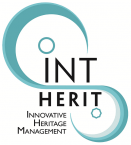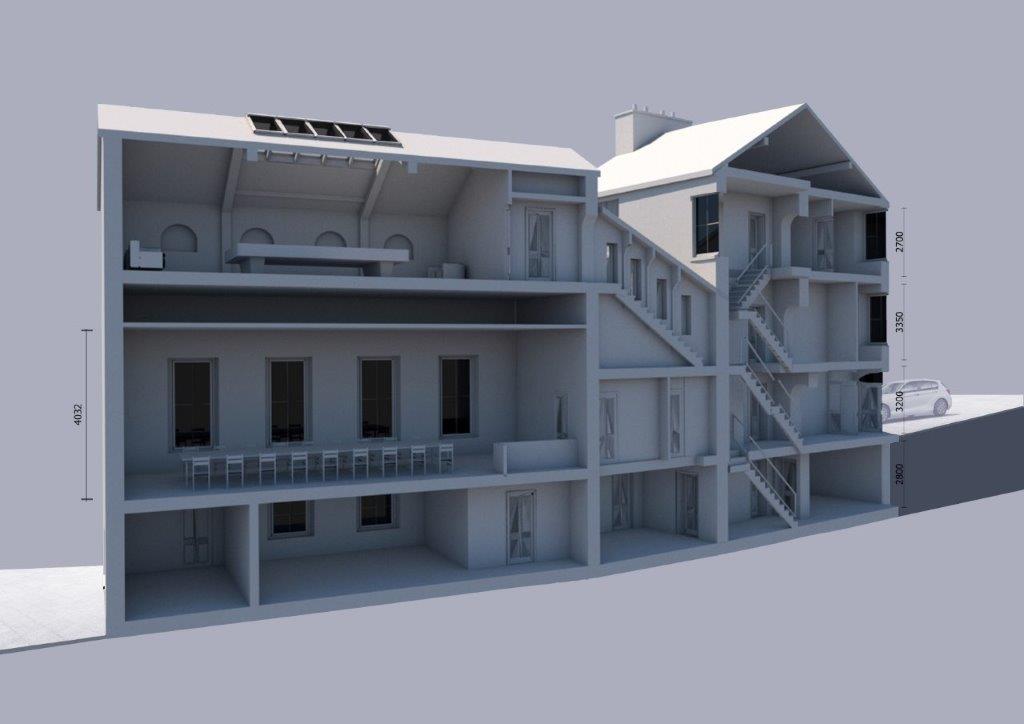Challenge: PPP
Summary
Armagh County Club was established in 1869 and has occupied the same premises for the last 149 years. The Club is a private members’ club situated in the centre of the historic city of Armagh, located in the heart of the city’s conservation area. Much of the building is lying vacant or under used and the Club have very exciting new uses for this outstanding property. For instance, the underused snooker room will become a seminar/exhibition space with a new build staircase and kitchen on the blank East gable. The lower ground floor will accommodate two apartments and a new lift will operate from here to the top floor. The Club will celebrate their 150th anniversary in 2019 and it is fitting that the membership has agreed an ambitious programme of improvement works to their property for this important milestone in their history.
Solutions
This solution offers an approach to addressing the challenges of collaborative working between the Public and Private sectors. The ‘private’ partner in this project is a charitable, membership driven and funded organisation with no commercial interests and no core source of income outside of the membership fees. Armagh City, Banbridge and Craigavon Borough Council have been working with the organisation for over 2 years and have proposed a funding and financial assistance package from a common fund that will enable this project to go ahead with a small obligation against the property owner. The project, once completed, will create sustainable income streams for the owner and enable them to invest resources in their charitable activities. Although this project is still in its design and planning stage, we feel as a team that we have learnt some valuable lessons to date. This project is an example of a PPP approach to regeneration although the private partner is quite unlike any of the other private partners that we as a municipality usually work with as they are governed by a Committee and are a voluntary organisation. A more patient iterative approach is required when dealing with this type of group although the end goal has to continue to remain in sharp focus.
Building on the sustainable and integrated approach
A key tenet of the Armagh masterplan is to promote development opportunities that create opportunities for local businesses to grow, expand and develop. We are also committed to addressing the decline of people living in the city centre as we feel that new uses such as residential and evening economy experiential activities can address the continuing decline of traditional town centres exacerbated by the challenging circumstances within the commercial retail sector. With much of the building lying vacant and unused, the property will likely qualify for a higher rate of financial intervention from public funds, effectively reducing the burden on this voluntary organisation to fund the necessary remedial works. The property itself is in a poor state of repair with evidence of cracking in the render, inappropriate repointing work having been carried out and poor condition of rainwater goods. Additionally, the Armagh County Club is run by a committee and ascertaining the appropriate authorisation to proceed with the work has been a challenge and this process of agreeing the way forward with the Committee has taken over 2 years. The Committee is a very conservative group and have required a considerable amount of support to arrive at a positive decision to proceed with this project.
Based on a participatory approach
The partnership that oversees the project is made up of key stakeholders who engage in a collective approach to decision making around the allocation of financial assistance to specific schemes and projects. This contains central and local government, the local business community, the local education sector and representatives from the local community. Heritage, we believe, is a shared participatory approach and we are passionate about ensuring that all key stakeholders are included and engaged in the process of learning about their local heritage and enjoying it. We combine the capital side of the projects with a comprehensive approach to undertaking complementary and educational initiatives to reinforce this common and collective shared approach to heritage.
What difference has it made? How did the result indicator shift?
Restoring old properties and buildings is a very costly activity and in recognition of this, Council and its partners in the Heritage Lottery Fund, have established a common fund which will support the property owners within the city to undertake much needed refurbishment works to properties such as Armagh County Club. Without the funding associated with the project, and the PPP approach championed by the Council, these properties will continue to decline with little prospect of securing sustainable and viable uses for them, thus increasing the risk of them eventually being removed from the streetscape. The Council takes very seriously its duty as a guardian of the important built heritage that has passed through generations in Armagh and this scheme will enable us to
Why should other EU cities use it?
Restoration of this property will bring multiple benefits to the historic core of Armagh City Centre. Not only will the project address the continued decline of an important Georgian property, the project will create a multi-functional space that will be utilised to host functions (including conferences, seminars and weddings) and play an important role in bringing footfall to this part of the city. Armagh is a City, like most Northern Ireland cities and towns, that suffered through the Troubles from an outflow of people from city centre residential and it appears that this trend is starting to reverse. The provision of high quality residential accommodation as part of this scheme will assist in this reversal as evidence suggests that the poor standard of accommodation in the city still deters the take up of residential space locally. The income generated from these undertakings will be used to further the charitable work of the County Club and the finished building will remain the home of this important organisation for the future.
Key Facts and Figures:
Project commenced in 2017 and will complete in 2020
Date of preparation of this case example: December 2018
Prepared by Shane Kelland
Budget
The budget for the restoration is £500,000 of which the municipality and partner founders will contribute approximately 60%, requiring the Club Committee to fund 40% of the costs of restoration. Subject to planning approval and building control consent, works will be commenced in early 2019 and finished in 2020. Council’s Towns-cape Heritage Project Manager will oversee the project as it develops and will have an advisory role in supporting the Committee as they undertake the regeneration of this historic property.
Extra information and hyperlinks

